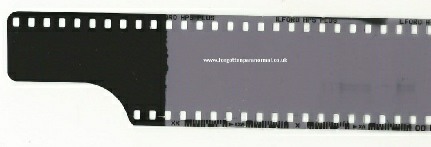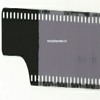

Contact Us
Email-
If you require help or advise about suspected haunting's please use the contact details below and we will gladly help where we can. We DO NOT charge for any advice or help that we provide and all information is kept confidential about you and the issues you have. For more information please email or call.
Email: Tim.watson@forgottenparanormal.co.uk
Mobile: 07818552830

The History -
The Liverpool Mercury, Monday 5 May 1879
On Saturday afternoon, a large party of ladies and gentlemen assembled at the Seamen's Orphanage, Newsham Park, to witness the opening of a sanatorium, which has been erected at the sole cost (about £4000) of Mr. Ralph Brocklebank the president of the institution. The Mayor and Mayoress (Mr. and Mrs. T. B. Royden) were present to perform the opening ceremony, and amongst the company who met them in the large dining hall were Mr. Ralph Brocklebank, Alderman Boyd, Mr Clarke Aspinall, Mr. R. Brocklebank, jun. Mr. James Beazley (the treasurer and chairman of the executive committee), Bishop Kelly, the Rev Drumond Anderson (the chaplain to the institution), Rev. Canon Warr, Captain Gough, C.B. Mr Joseph Armstrong, Mr P. Nelson. Mr. A. Turner, Mr. R. Allan, Mr G. Holt, Rev. William Lefroy, Rev. L. H. Lundie, Councillor Nicol. After the singing of a hymn by a number of the children, a procession was formed to the new building, the appointments and arrangements of which were minutely inspected by the visitors.
Further progress
From the outset the education of the children was given top priority, and from 1892 the boys' school, and from 1898 the girls' school were administered strictly under government regulations, and the institution received a share of the Parliamentary Grant from the Education Department. By 1899 there were 321 children in the orphanage, while 508 were receiving outdoor relief in the form of monetary grants and clothing. Children of all religious denominations were assisted, with preference given to orphans of British seamen connected with the Port of Liverpool. The scholastic and religious instruction were under the supervision of the Church of England Chaplain. The institution was formally opened on 30 September 1874 by the Duke of Edinburgh, the "Sailor Prince", fourth son of Queen Victoria. In May 1886, the Queen herself visited the institution, and added her name to the list of patrons. In July 1900 the Swimming Baths were opened. The Lord Mayor (Mr. Louise S Cohen) Who was accompanied by the Lady Mayoress and Miss Cohen, yesterday performed in a very high temperature, the pleasing ceremony of opening the new swimming bath generously given to the Liverpool Seamen’s Orphanage, Newsham Park, by several staunch friends of the institution. The bath, which is in every way up to date, save that a spray remains to be added, measures 60 by 26 feet, the floor bring graded so as to save waste of water, while at the same accommodating divers, novices, and polo goal keepers. Galleries at each end complete the structure, which is capitally lighted and ventilated the architect (Mr Culshaw) having produced a bath which is the admiration of experts. The Opening was brief and bright. Mr R. G. Allan (chairman of the institution) having conducted the guests to the chief gallery amid the cheers of boys and girls who with the teachers lined the bath, said the committee were adding to moral and intellectual training a more complete provision for physical exercise. Some of the generous donors where -
The war years
The First World War brought problems, and by 1918 one thousand orphans were being assisted. Royal appreciation of the work was shown from time to time by visits to Newsham Park, and following a visit by Queen Mary and the Princess Royal in 1921 the King bestowed upon the institution the title "Royal" and granted it a Royal Charter of Incorporation. In the inter-
Post-
In 1946, preparations were made for a return to Newsham Park, but with the great expansion in the country's social service schemes, many surviving parents were understandably reluctant to place their children in the orphanage. This led to a gradual decline in the number of resident children. New laws prohibited children under 11 years of age being educated at the same school as older children, and young children living in an institutional school. Despite Newsham Park's endowment, financial difficulties were increasing and there seemed little prospect of bridging the widening gap between income and expenditure. As a result the orphanage was closed on 27 July 1949 while continuing to implement the objectives of the founders in providing means for the education and maintenance of the children of deceased British merchant navy seamen. Places in various schools were found for those then being housed and educated at Newsham Park. Most were transferred to the Royal Merchant Navy School at Bearwood, fees, etc. being borne by Newsham Park. The sale of the premises at Newsham Park to the Ministry of Health for use as a hospital realised £125,000 in 1951; the proceeds were forwarded to the Charity Commissioners for investment. The committee continued to provide support to orphaned seamen's children on a non-
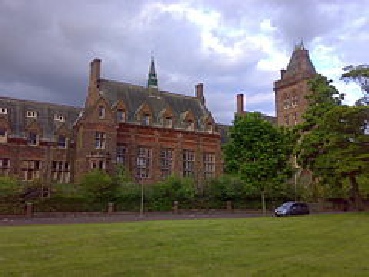
Location: Newsham Park Hospital
Address: Newsham Park Hospital
Orphan Drive
Liverpool
Merseyside
L6 7UN
Aprox. year Built: 1871


This is a formidable building, as we pulled up outside Newsham Park look very impressive and dark. As we drove round to the rear of the building to the car park you get some idea of the size of the Hospital. There is not just the main building you see in the plans above but also several out buildings. For this investigation we first set out some experiments. The first was simply paper an crayons,this we places on each of the wards as well as the naught boy corridor in one of the small rooms. We also places a 35mm black and white camera film still in the plastic tube in one of the offices o the top floor. Lastly we places a purple teddy bear with a REM pod in the ground floor ward lounge area. For the teddy we also placed a static video camera to film any movement we might get. These were left for the duration of our visit and colleted at the end.
Next we had the medium walk round which gave some K2 activity and gave us a general idea about what spirits we had within the walls of Newsham Park. We then moved onto the vigils. Starting in the cellar we had a spirit of a caretaker from the early years when the main building was an orphanage. Jackab was the name that was picked up on. This spirit seemed to had the women feeling they were beneath him. He also seemed to enjoy bullying and beating the children at the orphanage. In the vigil Jackab affected one of the ladies to the extent that she had to leave the room for a short time. As she left I could feel sharp pains down the left side of my neck. It felt like my muscles we being contracted. This was the same sort of thing that was happening to the lady that left the room. It was if Jackab was showing us what had happened to him as he passed over. It was a stroke rather than a heart attack. The room we were in looked like a laundry room now and would have been changed when the orphanage was bought by the NHS and turned into a hospital. See photos below
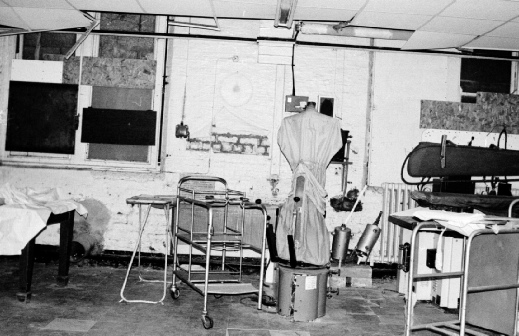
The Second vigil was in the naughty boys corridor. This started with touches and the end of the corridor being turned on and off at our request. Here we tried the ougy board but did not seem to get any responses on it. The touch was a constant for the hole vigil.
The most compelling evidence in the corridor was small BB pellets being thrown at us from the end of the corridor. While we did not see where they had come from we could hear and see them bouncing down the corridor. The corridor was probably the most active area at newsham park on the evening we was there. We seemed to have two different spirits, a young boy that was playful with the torch and throwing the BB pellets, the second seemed to be a dark older man that once abused the boys and was the one that locked them up in the rooms
The third vigil was on one of the wards, all the wards seemed to be quite except in the lounge areas. Here we had a spirit of a man aged between 20 and 30 who had had some sort of head trauma. Wether this was inflicted in the hospital or before he arrived we did not get an answer to it. Most of the activity in this room as on the K2. They started to flash to orange as soon as we entered the room.
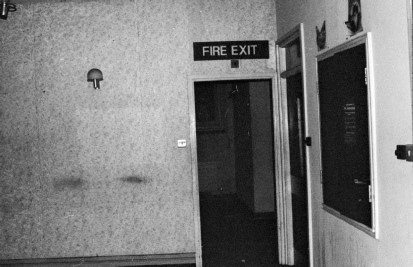
The last vigil was in the kitchen area located in the cellar on the other side to the laundry room. In the main kitchen area we again started with the glass work. There was no activity so we moved to table tipping. Again we had no movement of the table and we had no feelings of spirits with us. It had been mentioned earlier in the evening that in the kitchen the fridges and freezers have the most activity, So we moved into on of the fridges. This proved to be active on the K2 but not with table tipping so we moved to the corridor outside the freezer room. We continued with table tipping and asking for a knock on the table. As we was just finishing we had a big knock on the table that you could feel had come from under the table. It was not possible for anyone around the table to have done this as we could see all the hands on the table. While quite for most of the session the one knock at the end was very impressive.


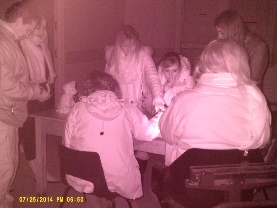
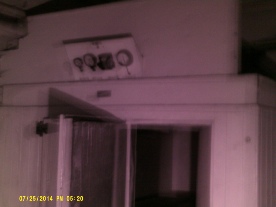
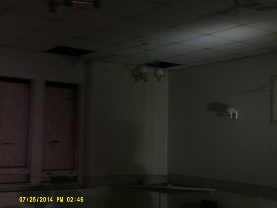
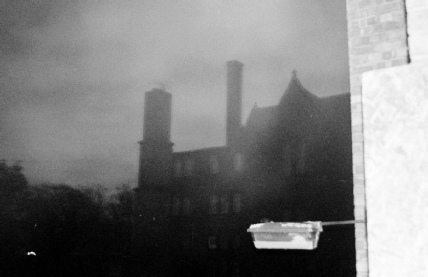
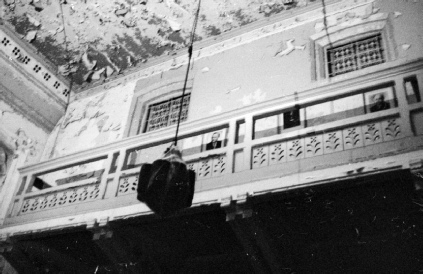
As mentioned above one experiment that we did at site was to place a roll of un-
Through out the night we was running EVP recording and IR video recording. Below shows some of the action that the spirits gave us. You will see light anomalies, Items being thrown over the camera and the K2 and touches being switched on and off. The sceptics will find reasonable explanations for all the events shown. All we will say is that to our knowledge there was no human intervention to any of the events. The only other explanation we have is the paranormal But we will let you decide.
